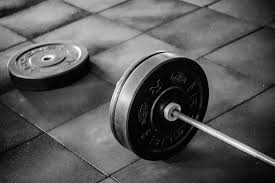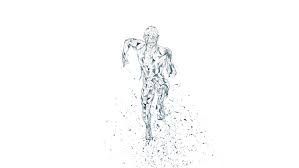Building Manager and Leadership Fitness
 Before entering the field of professional and organizational development, I was a choreographer and professional dancer. During these years I spent hours everyday standing at a ballet barre executing a series of exercises strategically designed to hone balance, agility, strength and endurance.
Before entering the field of professional and organizational development, I was a choreographer and professional dancer. During these years I spent hours everyday standing at a ballet barre executing a series of exercises strategically designed to hone balance, agility, strength and endurance.
This deliberate approach to fitness is critical to the health of a dancer. If a dancer is stronger than he or she is flexible, a muscle will be pulled. If flexibility surpasses strength, overstretched ligaments result. And if training for balance is neglected, a dancer is vulnerable to serious falls.
Watch this clip here of the famed ballet dancer, Mikhail Baryshnikov, as he displays this well-honed fitness (https://www.youtube.com/watch?v=ajWpEAhj2uY). His athleticism and artistry are dependent on rigorous training for balance, physical agility, extreme strength and endurance.
In today’s fast-paced and global economy, the workplace requires a parallel need for leadership and managerial fitness in each of these domains.
Today, as a leader and/or manager you are asked to balance competing demands inherent in global markets. You’re expected to balance the needs of a diverse workforce. You’re required to address the conflicting priorities of challenging work schedules and personal lives, and you must navigate the push and pull of rapidly changing technology.
What pulls you off BALANCE?
Do you find yourself dealing with technology that becomes obsolete in just a few short years, managing a workforce ranging from Baby Boomers to Generation Z, or communicating across intercontinental time zones? These are just a few of the norms that require agility in terms of how we manage both people and processes. Developing this agility is arguably one of the most significant challenges leaders face compared to 30 years ago.
Where do you need greater AGILITY?
Professional strength takes many forms. It involves the ability to influence and persuade; the capacity to comport yourself in a commanding way; to communicate with power and authority; to galvanize energy until a tipping point of momentum is reached; and to stand strong in a storm and not falter in your commitment.
Resilience is at the heart of building professional strength, and often it’s when we’re at our breaking point that we develop the muscle and fortitude needed for effective leadership.
What will STRONG look like for you in 2020?
Jim Collins, author of bestselling books Good to Great and Great by Choice, researched organizations across industries that outperformed their competitors by a factor of 10 to see what competencies led to success. One of the findings was that companies that had clear upper and lower limits of activity– to ensure they pushed ahead but not so much that they became overextended – were more likely to endure good times and bad. It’s similar on a personal level. Knowing your limits to keep you moving forward without the risk of burning out, are key to achieving personal and professional goals – whether it’s writing at least 500 words a day, but no more than a chapter a week of that novel aching to be born, or running at least one mile a day, but no more than 5, to improve cardio-vascular health.
What are your upper and lower levels of activity for professional and personal ENDURANCE?

Being able to pivot your company’s direction in reaction to new technology, include diverse perspectives for a balanced view, and do the heavy lifting to get a startup going are just a few of the fitness abilities needed to thrive in the world of work.
My Australian colleague, Dr. Annette Watkins, and I are excited to facilitate BASE Camp for Leaders and Managers at Purdue University’s International Council of Purdue Women’s Conference on April 1st, 2020, where we will explore strategies for building balance, agility, strength and endurance.
We’d love to hear your thoughts to the questions posted above! If you’d like to share them, please email me at Maureenbreeze@cultivage.com.